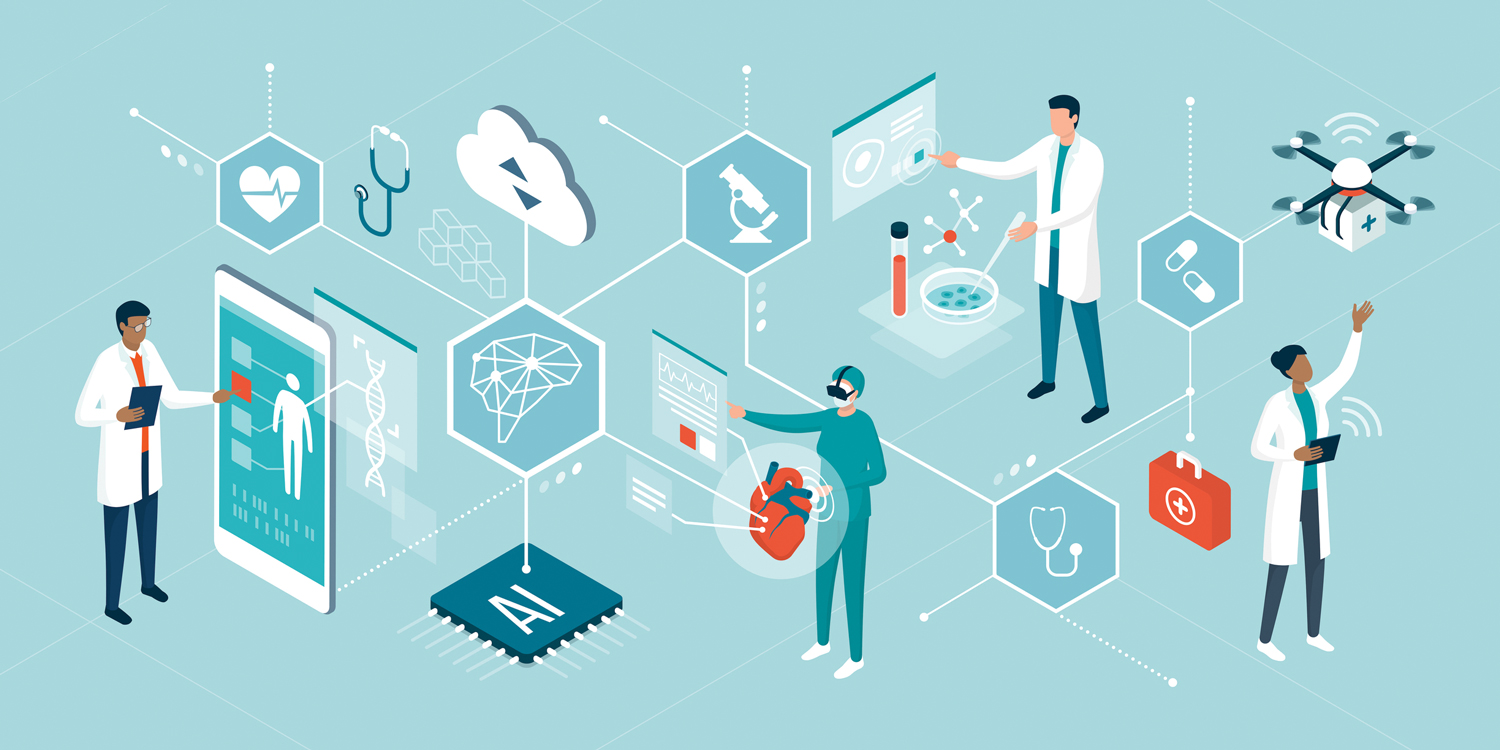 When electronic records, online appointment booking and phasing out the humble fax machine are still considered ‘innovations’, that says plenty about the health care sector’s glacial adoption of technology.
When electronic records, online appointment booking and phasing out the humble fax machine are still considered ‘innovations’, that says plenty about the health care sector’s glacial adoption of technology.

Then 2020 delivered a global pandemic and the fear of not being able to deliver a service, concerns for the health and safety of practices and patients, along with hard-fought Medicare rebates led to the accelerated adoption of telehealth – albeit sometimes begrudgingly.
Was this the catalyst we needed in healthcare to explore and embrace the latest technology trends for our practices including machine learning (ML) and artificial intelligence (AI), the ‘Internet of Things’ (IOT) and 5G?
Sci-Fi author William Gibson famously said, “the future is already here — it’s just not very evenly distributed”. This uneven distribution is most evident in laggard industries like healthcare where the combination of conservatism in our ranks and complex, often outdated regulations create an environment that delays adopting many technologies that more progressive industries have had in place for years, or decades.
Predicting the future of healthcare is easy. Predicting when that future arrives is much more difficult. It’s in our power to bring the change together by being open to emerging trends.
Three to watch
ML and AI: Most radiologists would recognise the concurrent power and threat of artificial intelligence that is disrupting the diagnostic imaging sector. Many of the latest generation software applications are incorporating ML and AI to create insights and automation like never before.
IOT: Smart devices will become commonplace in health care as Cloud-connected sensors collect copious amounts of data to feed the voracious AI algorithms powering many of the aforementioned software applications. The quantified self-movement has grown as smartwatches record and track their users within an inch of their lives. The smartphone is now the ultimate IOT device with countless apps for diagnostic and even therapeutic benefits.
5G: Increased technology requires more performance and power for an increasingly connected society and practice. Telehealth, the requirements of IOT and latest AI-driven software needs greater bandwidth for efficient data transfer. 5G technology is another important step towards a more capable health care sector. That can only be a good thing for patient wellbeing, which we all can agree is the most important outcome of all health care systems.
With all this in mind, it makes sense to look for these types of features in any software or hardware you procure to ensure you are dealing with a leading-edge solution that will allow you to future-proof for at least a few years. The key takeaway is that more open-minded practices/practitioners who can stay a step ahead with technology – without overinvesting in the more esoteric stuff – will hold an advantage over those who default to wait and see.
Key messages
- Healthcare innovation has lagged other industries.
- 2020 has forced a catch-up.
- Be open-minded.
Author competing interests – nil

